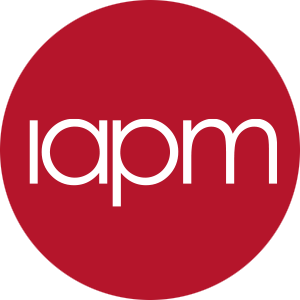IAPM Essentials #94 - News from the project management world
What was eventful last week? What has happened in project management? Here you can find articles worth reading and links to videos or podcasts that we warmly recommend.
To put it briefly: Essentials from the world of project management.
Enjoy reading!
To put it briefly: Essentials from the world of project management.
Enjoy reading!

IAPM Essentials February 22, 2022
This week, these three articles were particularly inspiring:
Micro Habits: Small habits, big impact - German language
Setting big goals is a good idea. Unfortunately, you often fail when you try to implement these goals right away. After all, no matter how great the motivation, if the barrier to entry is too high, the plan will fail right at the start. To avoid this, you should develop micro habits. Small, easy-to-implement habits that bring you a little closer to your big goal, e.g. living a healthier or happier life. In sports, instead of trying to run 10 km, you can start with one. Over time, even ten squats will turn into 100. The same applies to diet: instead of giving up meat or industrial sugar overnight, it is better to first go a few days without this consumption and then increase. You don't need much discipline for this and the probability of long-term success is higher. The only thing that is important is perseverance and that you reward yourself for your successes from time to time.
Click here to read the original article.
Patterns in the Agile Principles
One of the big challenges in project management is to remember all the technical terms or contents of standard works. While the IAPM covers almost all technical terms in the glossary (which you can access here at any time and free of charge), the article presents you with a good way to remember the 12 principles of the Agile Manifesto. You can, in fact, divide these principles into four broad categories. The first category is the one that "delivers value". If you look at the principles, this corresponds to items 1, 3 and 7. The next category is about responding to change rather than sticking to the plan, which is 2, 9 and 12 - you can summarise these items as "adaptation". "Cooperation" applies to items 4, 6 and 11. The remaining points are difficult to place in a common category. However, on closer analysis, they have in common that they are about "leading".
Click here to read the original article.
Story Points - German language
Projects are considered a failure if the objectives are not met, the schedule is not adhered to or the budget is exceeded. In short: if bad estimates were made when setting the goals, the deadlines or the budget. To avoid wrong estimates, Scrum has so-called Story Points. In this context, "story" refers to what is to be achieved and "points" are used to estimate within a relative point system - instead of absolute values such as hours. Story points are therefore not estimated in hours, days or Swiss francs, but in complexity. The clearer a task is, the less complex it is and the lower the Story Points that are awarded. Story Points are valued by the team and they provide an orientation for the team - but as soon as controlling intervenes, e.g. to quantify the Story Points, the system fails. You want to know how to estimate Story Points and whether this is appropriate for you and your team, then you should read this article.
Click here to read the original article.
Setting big goals is a good idea. Unfortunately, you often fail when you try to implement these goals right away. After all, no matter how great the motivation, if the barrier to entry is too high, the plan will fail right at the start. To avoid this, you should develop micro habits. Small, easy-to-implement habits that bring you a little closer to your big goal, e.g. living a healthier or happier life. In sports, instead of trying to run 10 km, you can start with one. Over time, even ten squats will turn into 100. The same applies to diet: instead of giving up meat or industrial sugar overnight, it is better to first go a few days without this consumption and then increase. You don't need much discipline for this and the probability of long-term success is higher. The only thing that is important is perseverance and that you reward yourself for your successes from time to time.
Click here to read the original article.
Patterns in the Agile Principles
One of the big challenges in project management is to remember all the technical terms or contents of standard works. While the IAPM covers almost all technical terms in the glossary (which you can access here at any time and free of charge), the article presents you with a good way to remember the 12 principles of the Agile Manifesto. You can, in fact, divide these principles into four broad categories. The first category is the one that "delivers value". If you look at the principles, this corresponds to items 1, 3 and 7. The next category is about responding to change rather than sticking to the plan, which is 2, 9 and 12 - you can summarise these items as "adaptation". "Cooperation" applies to items 4, 6 and 11. The remaining points are difficult to place in a common category. However, on closer analysis, they have in common that they are about "leading".
Click here to read the original article.
Story Points - German language
Projects are considered a failure if the objectives are not met, the schedule is not adhered to or the budget is exceeded. In short: if bad estimates were made when setting the goals, the deadlines or the budget. To avoid wrong estimates, Scrum has so-called Story Points. In this context, "story" refers to what is to be achieved and "points" are used to estimate within a relative point system - instead of absolute values such as hours. Story points are therefore not estimated in hours, days or Swiss francs, but in complexity. The clearer a task is, the less complex it is and the lower the Story Points that are awarded. Story Points are valued by the team and they provide an orientation for the team - but as soon as controlling intervenes, e.g. to quantify the Story Points, the system fails. You want to know how to estimate Story Points and whether this is appropriate for you and your team, then you should read this article.
Click here to read the original article.
Further articles worth reading and podcasts worth listening, you should not miss:
5 Tools to Help Create Product Goals and Sprint Goals
Click here to read the original article.
A simple approach to make your Agile transformation towards DevOps brutally Transparent!
Click here to read the original article.
Agile Softwareentwicklung: Kanban effektiv einsetzen und Fallstricke vermeiden
(en.: Agile software development: Use Kanban effectively and avoid pitfalls)
Click here to read the original article.
Das ist das Ende! Vom guten oder glanzlosen Beenden von Projekten, Ziehwegen, Tourenabbrüchen und allem dazwischen. Teil 1
(en.: This is the end! From the good or lackluster completion of projects, pulling paths, tour cancellations and everything in between. Part 1)
Click here to read the original article.
End of Scrum? Part II: Lean Thinking
Click here to read the original article.
KMM 1.3 updates to the Practice poster
Click here to read the original article.
Nutzen Sie Workhacks! Das sind Trittsteine auf dem Weg in die Zukunft
(en.: Use Workhacks! These are stepping stones on the way to the future)
Click here to read the original article.
Sind wir als Scrum Master zu übergriffig?
(en.: Are we too abusive as Scrum Masters?)
Click here to read the original article.
The Continuous Improvement Culture Model
Click here to read the original article.
Transparency — The Hardest Thing to Pull Off in Organisations
Click here to read the original article.
Click here to read the original article.
A simple approach to make your Agile transformation towards DevOps brutally Transparent!
Click here to read the original article.
Agile Softwareentwicklung: Kanban effektiv einsetzen und Fallstricke vermeiden
(en.: Agile software development: Use Kanban effectively and avoid pitfalls)
Click here to read the original article.
Das ist das Ende! Vom guten oder glanzlosen Beenden von Projekten, Ziehwegen, Tourenabbrüchen und allem dazwischen. Teil 1
(en.: This is the end! From the good or lackluster completion of projects, pulling paths, tour cancellations and everything in between. Part 1)
Click here to read the original article.
End of Scrum? Part II: Lean Thinking
Click here to read the original article.
KMM 1.3 updates to the Practice poster
Click here to read the original article.
Nutzen Sie Workhacks! Das sind Trittsteine auf dem Weg in die Zukunft
(en.: Use Workhacks! These are stepping stones on the way to the future)
Click here to read the original article.
Sind wir als Scrum Master zu übergriffig?
(en.: Are we too abusive as Scrum Masters?)
Click here to read the original article.
The Continuous Improvement Culture Model
Click here to read the original article.
Transparency — The Hardest Thing to Pull Off in Organisations
Click here to read the original article.

Author: IAPM internal
Keywords: IAPM Essentials, Links, News
